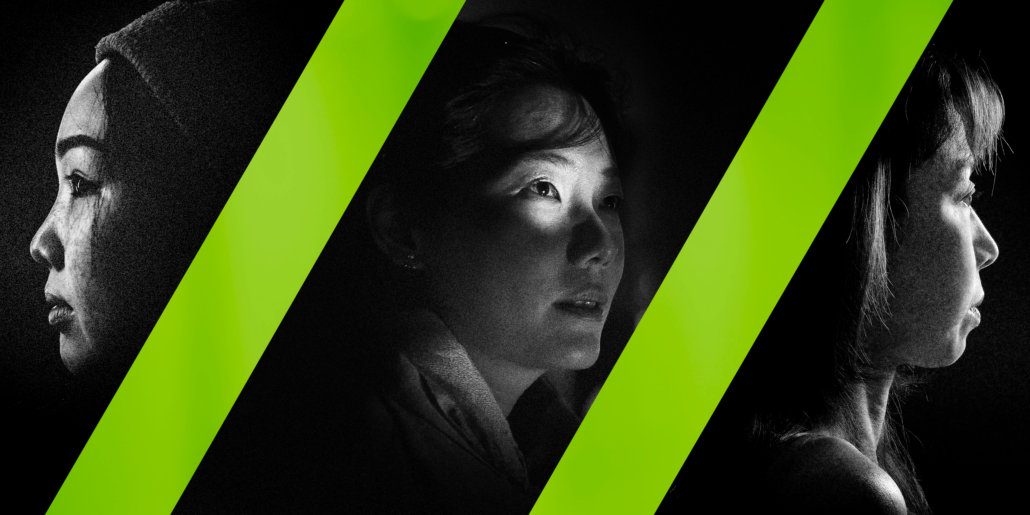What It Means to Be An Asian Woman in The Workplace
And What Businesses Can To to Create An Inclusive Culture
I have an uncommon, un-American-looking name.
Many people whom I’ve met in person multiple times in a professional setting have never remembered or addressed me by my name. People often mispronounce my name without trying to figure out the correct pronunciation, or just choose to not engage with me at all to avoid embarrassment or discomfort. I used an English name when I was in graduate school, as did most of my Asian classmates, to make people’s lives easier. After graduation, I chose to keep only my Chinese name, knowing that in this choice may affect my career opportunities in future.
If you are Asia, Asian American, or Pacific Islander, you may recognize this struggle; the system is not designed for us to have both cultural identities and opportunities at the same time.
Because of the model minority myth, the false perception of universal acceptance and success of Asians and Asian Americans who bear few traumatic racial struggles, we are extra pressured to prove our worthiness. We’re constantly in the mindset that respect to us is earned not given. We are told if we want to earn respect and a place in American society, we need to keep our head down, be quiet, and work hard. We think if we can blend into the mass, one day we will belong. This myth feeds the need to over-assimilate into the mainstream culture, to sacrifice our cultural identity in exchange for acceptance and thereby success in American society.
When it comes to the workplace, this over-assimilation is a lot more specific, amplifying the onus on us to adapt, from accent to the way you speak up at a meeting to the pop culture or football reference you’re expected to make a comment on over water-cooler conversations.
The rise in anti-Asian sentiment coupled with Asian Heritage month has deflected attention from another troubling issue: Anti-Asian sentiment in the workplace.
The Asian Woman Experience
The challenges facing Asian and Asian American people in general become extra challenging when dealing with the intersectionality of being an Asian woman.
Asian women have been historically sexualized and exotified in the western culture. People, particularly men, expect Asian women to be docile, sexy, and nice. Anything other than that becomes a threat. This stereotype makes it extremely hard for Asian women to build professional relationships in the workplace – workplaces that most of the time are dominated by white men. It is dehumanizing and degrading when you realize the man across the table has no interest at all at your intellect or your industry insights; that they see you only as a young Asian woman, which is more or less an object.
The onus is again on us, Asian women, to dress more conservatively and to carry ourselves with more assertiveness and an extra level of professionalism in order to be taken seriously.

Image Source: NBC News; Getty Images
What Businesses Can Do to Create A More Inclusive Workplace
Culture change will be the key. And the culture change needs to come from the top. As we see more and more diversity initiatives taking place across the country, we must not forget about inclusion, which is a connected but separate process. Diversity is focused on representation; inclusion is focused on the actual experience of your employees and the way people’s identities and opinions are valued in the workplace. Diversity will die in a workplace without inclusion, because your “diverse hires” will feel miserable and leave, wasting your effort and resources in the long run.
Business leaders have a responsibility to model to create an inclusive work environment, where resources are equally distributed, and where all people are treated with respect and valued as who they are. If you don’t intentionally include, you will unintentionally exclude. Once an inclusive culture is in place, everything else follows, such as productivity, morale, creativity, collaboration, and so on.
There is also an additional need for inclusivity right now. As ideologies in the United States have become deeply polarized and many ethnic cultures have been politicized and weaponized, it takes so much energy for people outside the dominant culture to check their identity at the door when they come into work. An inclusive workplace opens a door for necessary learning and honest conversations. It makes people in marginalized groups feel like they can be heard and that they can bring their whole self to work.
Given the rising anti-Asian sentiment, organizations and leaders need to show care to their Asian American employees, building understanding and advocating for solidarity during and beyond AAPI Heritage Month. Reach out to the Asians, Asian Americans, and Pacific Islanders on your team to offer genuine support. There are many ways to do this, such as hosting a town hall meeting or facilitated conversations that invite Asian and Asian America employees to share their experiences and stories.
Avoid is silence or window-dressing. Silence can be perceived as indifference, which is the single biggest predictor of loss of trust. Window-dressing describes performative advocacy that does not set aside proper resources to deliver on promises made. Window-dressing may feel good in the moment, but further alienates marginalized groups and cultivates a toxic culture in the long run. Every statement or newsletter you push out makes implicit promises to those who matter to you. If you feel pressured to make a statement on a social issue without being prepared to walk the talk, I’d suggest you not make the statement.

What else can business leaders do to support their Asian American friends and colleagues who are facing discrimination in the workplace or on the street?
Stand in solidarity – with the Asian community, with the black community, with the Latino community, with the indigenous community, with the LGBTQIA community…
The systems of oppression and hate that we face thrive off our division. White supremacy relies on each of our communities that have been oppressed to fight alone and to fight against one another. But when all those who face oppression and our allies stand together, when we fight for one another instead of against each other, when we lift up each other’s struggles rather than tear down and compare our struggles, when we recognize that, as Emma Lazarus said, “until we are all free none of us is free,” we have a chance to make the dream of a better, freer, more just country a reality.


